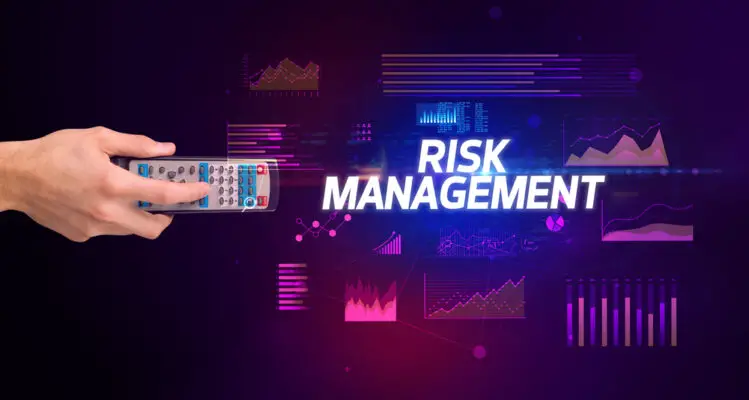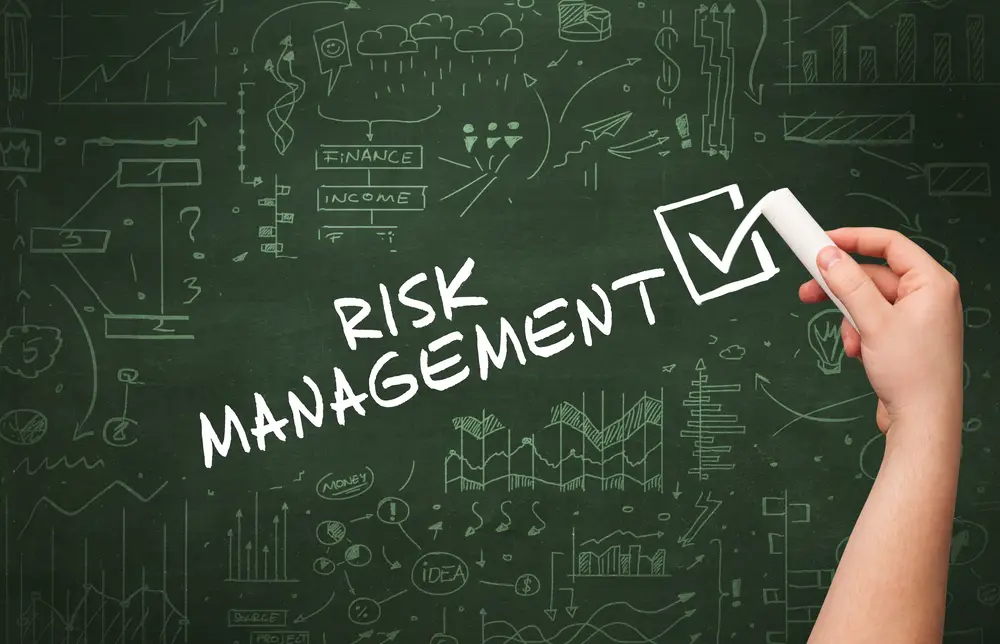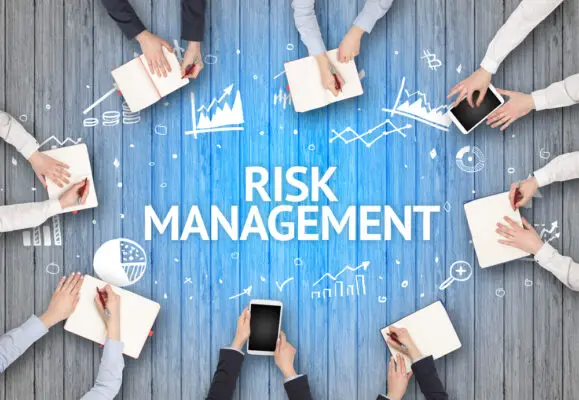An IRMP is a comprehensive approach to managing an organization’s exposure to risk. It encompasses all aspects of an organization’s operations, from strategic planning to day-to-day decision-making. It provides a platform for enterprise risk management activities.
An effective IRMP must be tailored to the specific needs of the organization. There is no one-size-fits-all solution when it comes to managing risk. The program must be designed to reflect the organization’s unique culture, values, and goals. It should also be flexible enough to adapt to changing circumstances.
Today, security professionals consider managing risk to be their biggest challenge, and quite often, it keeps the employees awake. Yes, managing risks across the enterprise is important, but 65% use ad-hoc solutions today.
Many remain locked in a traditional silo system, using disparate systems and disconnected tools. In the past three years, 61% of respondents reported having suffered a security issue or breach.
The goal of an IRMP is to help an organization identify, assess, and manage risks to protect its people, property, and reputation. An effective program will also help an organization identify opportunities and make informed decisions that drive business growth.
One way to manage risk is through the implementation of an integrated risk management (IRM) program. An IRM program takes a holistic approach to manage risk by identifying all the risks a company faces, developing strategies to mitigate those risks, and integrating those strategies into the business’s day-to-day operations.
In this blog post, we’ll take a closer look at IRM programs, including what they are and how to develop and implement one that works for your business.
Components of an Integrated Risk Management Program
There are four key components of an effective IRMP:
Risk identification
The first step in any risk management program is identifying the risks that could potentially impact the organization. This can be done through various means, such as interviews with key stakeholders, reviews of past incidents, and data analysis.
Risk assessment
Once risks have been identified, they must be assessed to determine their potential severity and likelihood. This will help prioritize which risks need to be addressed first in business units.
Risk Mitigation
Once risks have been identified and assessed, controls can be put in place to mitigate them. Controls can be either preventive or detective in nature.
Risk monitoring and review
The final step in the process is ongoing monitoring and review of the program to ensure that it is effective and up-to-date. This includes regular assessment of risks and implementation of new controls as needed.
What Is an Integrated Risk Management Framework?
An Integrated Risk Management (IRM) Framework is a comprehensive approach to managing risks across an organization. It combines risk management techniques and strategies to identify, assess, monitor, and mitigate current and future risks that the organization may face.
The IRM Framework includes multiple components: risk identification, assessment, monitoring, and mitigation. This framework helps organizations understand their risk profile better and develop appropriate strategies to reduce or eliminate potential risks.
The IRM Framework also enables organizations to make more informed decisions by providing them with a holistic view of their risk landscape.
In combining multiple risk management techniques into one unified strategy, organizations can gain insights into how different risks interact with each other and how they affect the business’s overall performance.
This allows them to make better decisions about which risks to prioritize and how best to manage them.
Overall, an Integrated Risk Management Framework is an effective way for organizations to manage their risk profile in a comprehensive manner. By leveraging this framework, organizations can ensure that they are making informed decisions while mitigating potential risks to achieve their desired outcomes.
An integrated risk management system is a systematic approach incorporating risk management strategies to manage present and future risks for organizations.
The document outlines specific activities to control risks and explains the accountability and reporting methods used for supporting the risk management process.
What Are the Benefits of Integrated Risk Management?
The benefits of IRM are numerous, including improved decision-making, reduced costs, and a better understanding of overall risk exposure.
One key benefit of IRM is that it allows for more agile, risk-based decision-making. Organizations can make decisions quickly and accurately based on their current risk profile by having one view of top risks.
This also helps bridge the strategy/execution gap by ensuring all stakeholders can access up-to-date information about potential risks and increases the risk-aware culture of the organization.
Another benefit is that it creates a business culture that is aware of cyber risk. By mapping individual controls to multiple risk factors, organizations can gain insight into their IT landscape and identify areas where they may be vulnerable to attack.
This helps ensure that employees are taking appropriate steps to protect company data and assets from malicious actors.
Finally, IRM offers businesses the ability to automate certain processes related to risk management. Automation can help reduce costs associated with manual processes while also providing more accurate results in less time.
This makes it easier for organizations to stay compliant with regulatory requirements while still being able to focus on other aspects of their operations.
What to Include in an Integrated Risk Management Program
An effective IRM program should include the following components:
Risk Identification: Identifying potential risks that could affect an organization’s operations and objectives is the first step in any integrated risk management program. It involves analyzing internal and external factors such as financial performance, market conditions, customer feedback, regulatory changes, etc., to identify areas of potential risk.
Risk Assessment: Once potential risks have been identified, they must be assessed in order to determine their likelihood and impact on the organization. The process should involve gathering data from various sources, such as financial statements, customer surveys, and industry reports, to assess each risk’s severity accurately.
Risk Mitigation Strategies: After assessing each risk’s severity, organizations should develop strategies to mitigate or reduce its impact on operations and objectives. It can include implementing policies and procedures that address specific risks or investing in technologies that help detect and respond to threats quickly.
Risk Monitoring: Organizations should also establish processes for monitoring existing risks over time to ensure they remain within acceptable tolerance levels. It includes regularly reviewing internal controls and processes and staying up-to-date with changes in the external environment that could increase or decrease the level of risk the organization faces.
How to Implement an Integrated Risk Management Strategy
Implementing an effective IRM strategy requires five basic steps:
Identify potential risks
The step involves identifying all potential risks that could impact your organization’s operations or objectives. It includes both internal and external risks, such as financial, operational, legal, reputational, political, or environmental risks.
Assess the likelihood of each risk management activities
Once you have identified the potential risks, you need to assess how likely they are to occur by analyzing their probability and severity.
Develop strategies to mitigate each risk
After assessing the likelihood of each risk occurring, you can develop strategies to reduce or eliminate its impact on your organization.
These strategies can include implementing preventive measures such as policies and procedures or using insurance coverage to protect against losses due to certain events.
Monitor the effectiveness of mitigation strategies
It is important to regularly monitor the effectiveness of your mitigation strategies to ensure they are working as intended and that any changes in circumstances are considered when necessary.
Update plans regularly
Finally, it is important to update your plans regularly in order to keep up with changing circumstances or new information about potential risks that may arise over time.
How Do I Pick the Right IRM Solution for My Business?
There are certain factors that can determine an effective risk management system. Organizations have increased both revenue revenues and geographic reach. Managing risk can be difficult for growing organizations, and integrated risk management solutions are important.
Knowledge about risks and their management should be gathered across organizations. In a changing world, regulatory requirements require data collection and timely reporting.
First, you should evaluate the features and capabilities of each solution to ensure that it meets your organization’s specific requirements. For example, some solutions offer advanced analytics capabilities while others focus on compliance or security.
Further, you should consider the cost of implementation and ongoing maintenance for each option as well as any potential integration issues with existing systems.
It is also important to consider the vendor’s reputation when selecting an IRM solution. You should research customer reviews and case studies to understand better how the vendor has performed in similar situations. You should also look at the vendor’s track record for timely updates and support services.
Finally, you should assess how well the IRM solution will fit into your organization’s existing processes and culture. If you already have an established risk management program, you will want to ensure that any new system integrates seamlessly with existing tools and procedures.
Choosing the right Integrated Risk Management (IRM) solution can be a daunting task but by taking these factors into consideration, you can ensure that your organization selects a system that meets its specific needs now and in the future.
How Can the Integrated Risk Management Process Be Successfully Implemented?
The first step is to create a clear vision for the IRM process and communicate it throughout the organization. This will help ensure that everyone understands its purpose and how it fits into the overall risk management strategy.
Organizations can begin implementing IRM by first assessing their current risk management practices. This includes understanding the existing processes and procedures in place for identifying, assessing, and mitigating risks.
Once these processes have been identified, organizations should then develop guidelines for managing risks across the organization. These guidelines should include the roles and responsibilities of individuals involved in risk mitigation as well as policies for reporting and responding to potential risks.
Organizations should also consider investing in software technology that provides visibility into the process and allows them to monitor any changes or updates in real time.

What Are the Challenges Encountered in Following an Integrated Risk Management Approach?
Organizations often have difficulty implementing integrated risk management processes. These may be broadly classified as commercial and technical issues.
One challenge that organizations face when implementing an IRM approach is ensuring that all stakeholders are on board with the process. It requires strong communication and collaboration between departments and individuals to ensure everyone understands their role in the risk management process.
This includes having adequate staff and technology resources, as well as sufficient budgeting for training and other initiatives related to risk management.
Conclusion
An integrated risk management program (IRMP) is a comprehensive approach to managing an organization’s exposure to risk. It encompasses all aspects of an organization’s operations, from strategic planning to day-to-day decision-making.
An effective IRMP must be tailored to the specific needs of the organization and flexible enough to adapt to changing circumstances. The goal of an IRMP is to help an organization identify, assess, and manage risks to protect its people, property, and reputation.
Have you read?
How to set up an enterprise risk management framework
Best integrated risk management services
Benefits of integrated risk management
Ways in which integrated risk management is important
Best enterprise risk management technology

Chris Ekai is a Risk Management expert with over 10 years of experience in the field. He has a Master’s(MSc) degree in Risk Management from University of Portsmouth and is a CPA and Finance professional. He currently works as a Content Manager at Risk Publishing, writing about Enterprise Risk Management, Business Continuity Management and Project Management.



